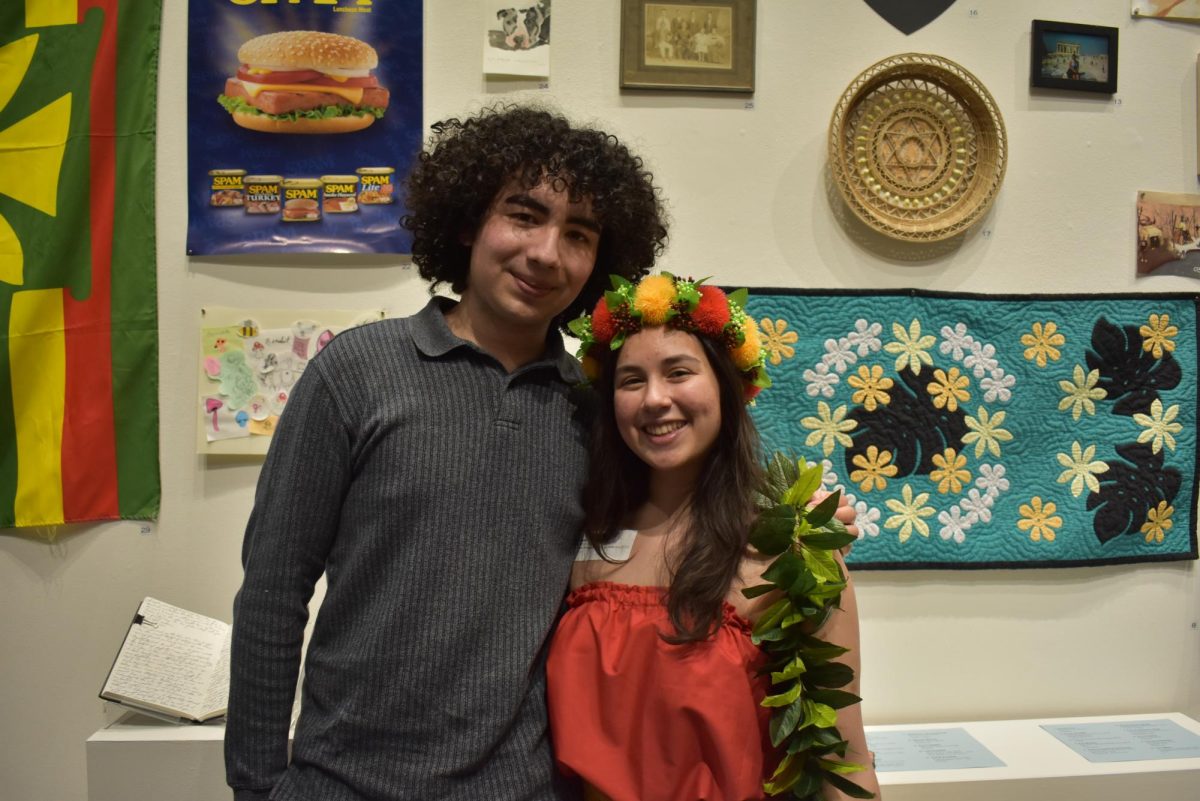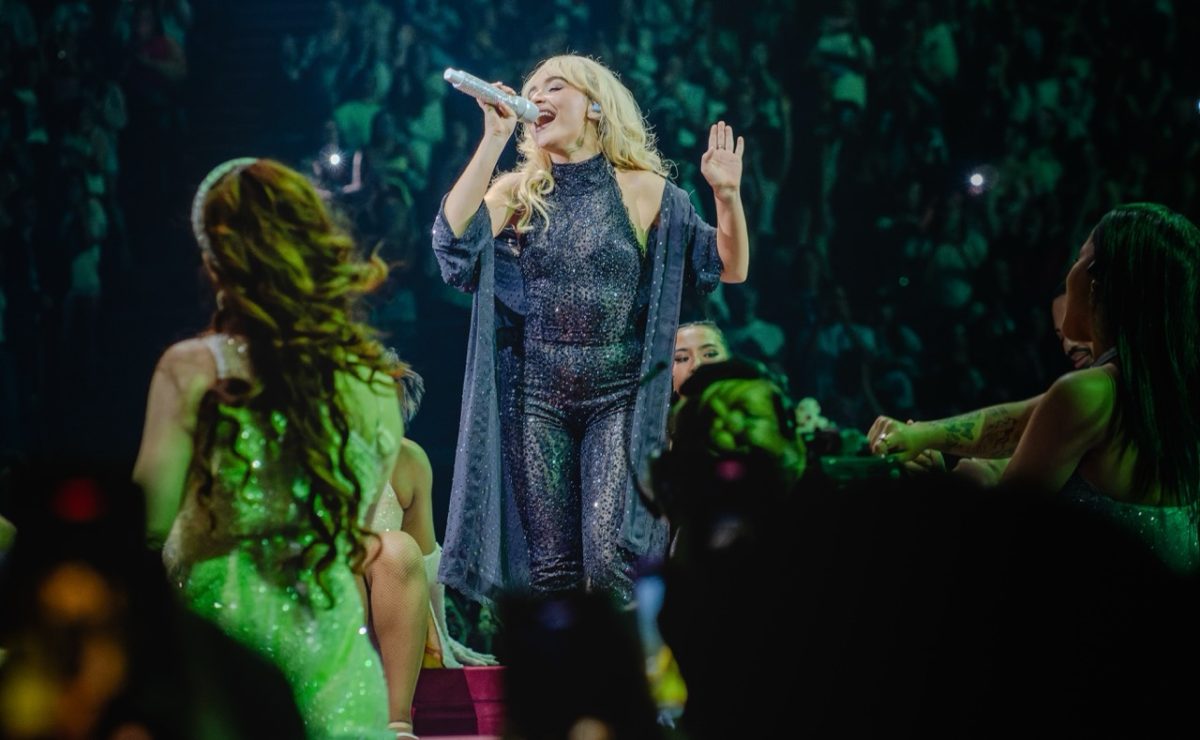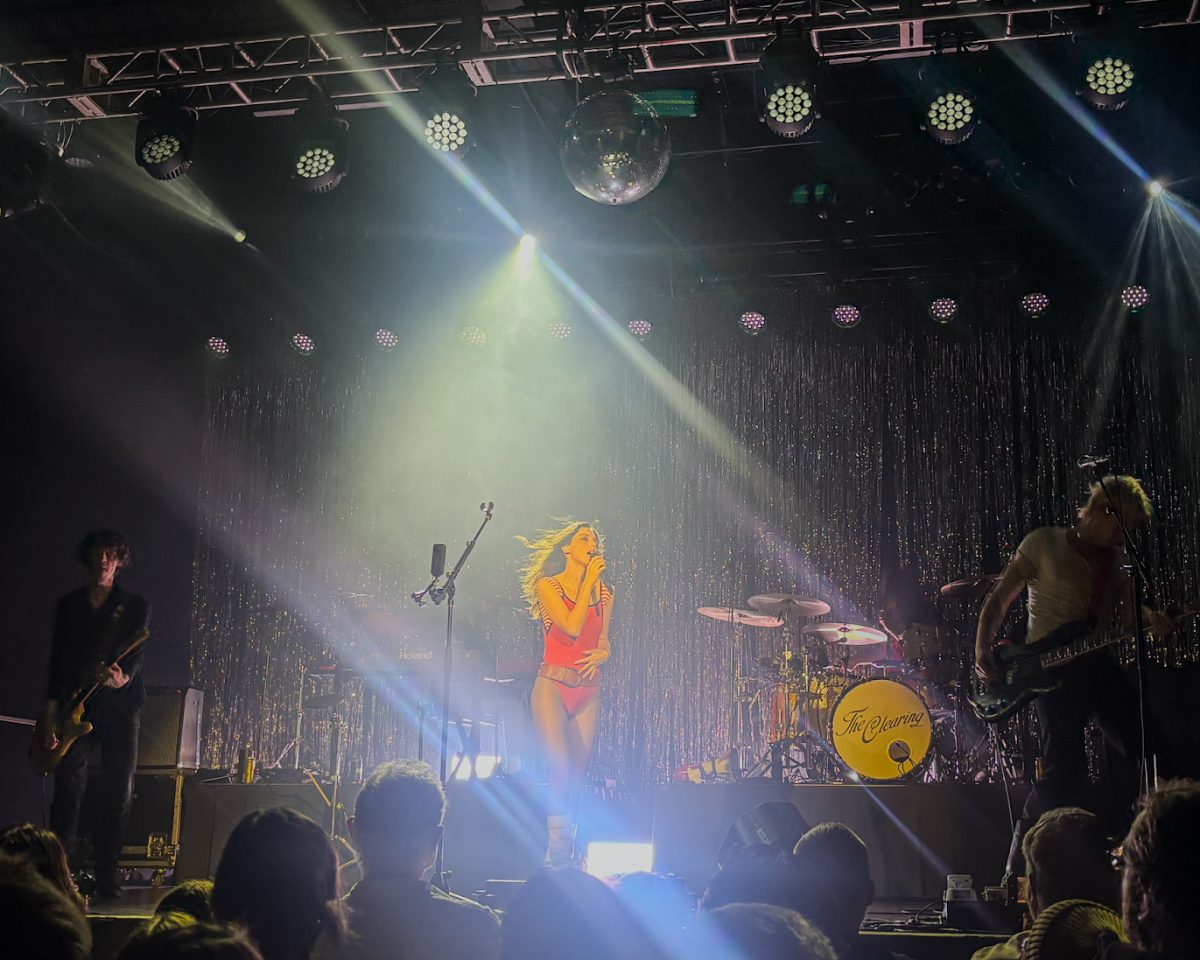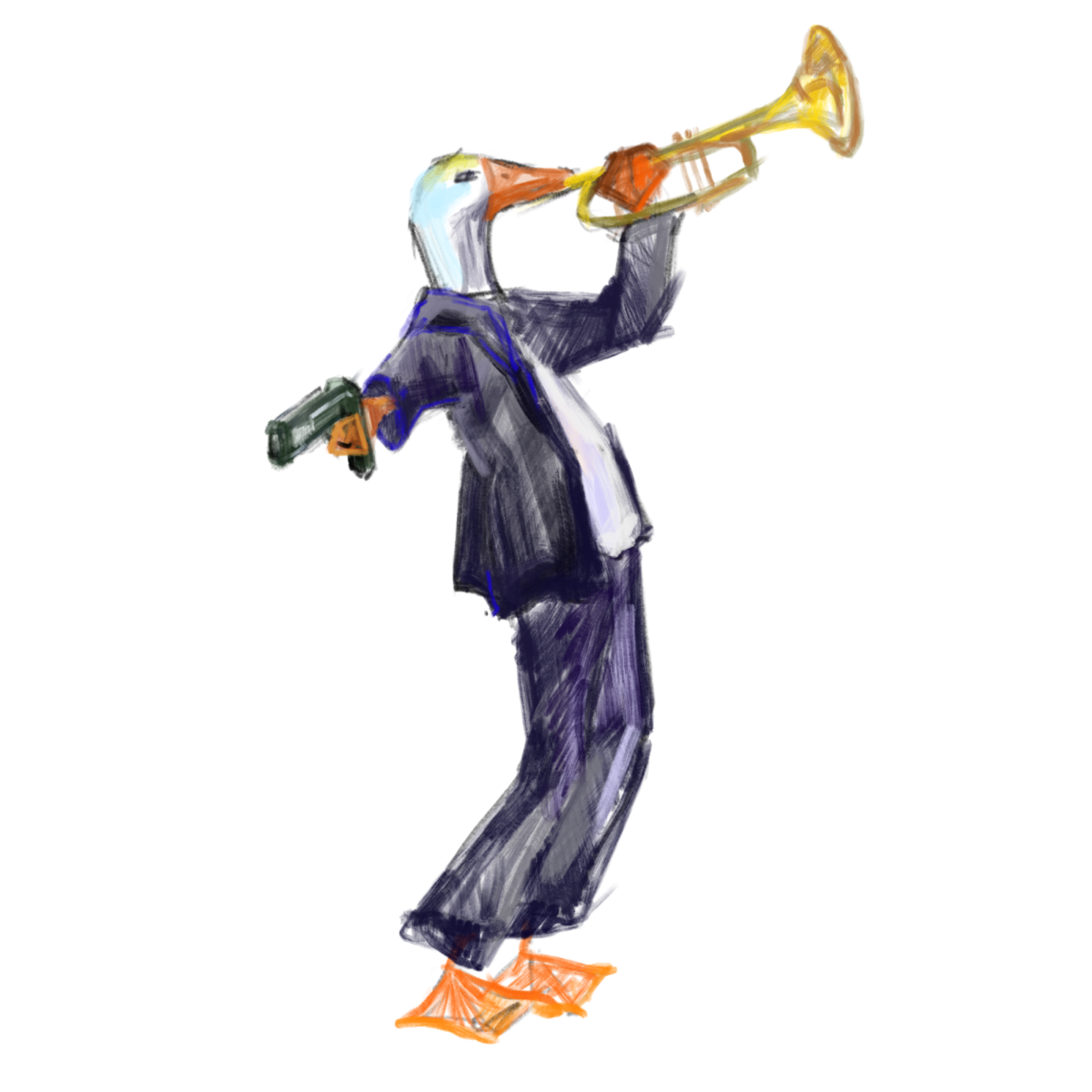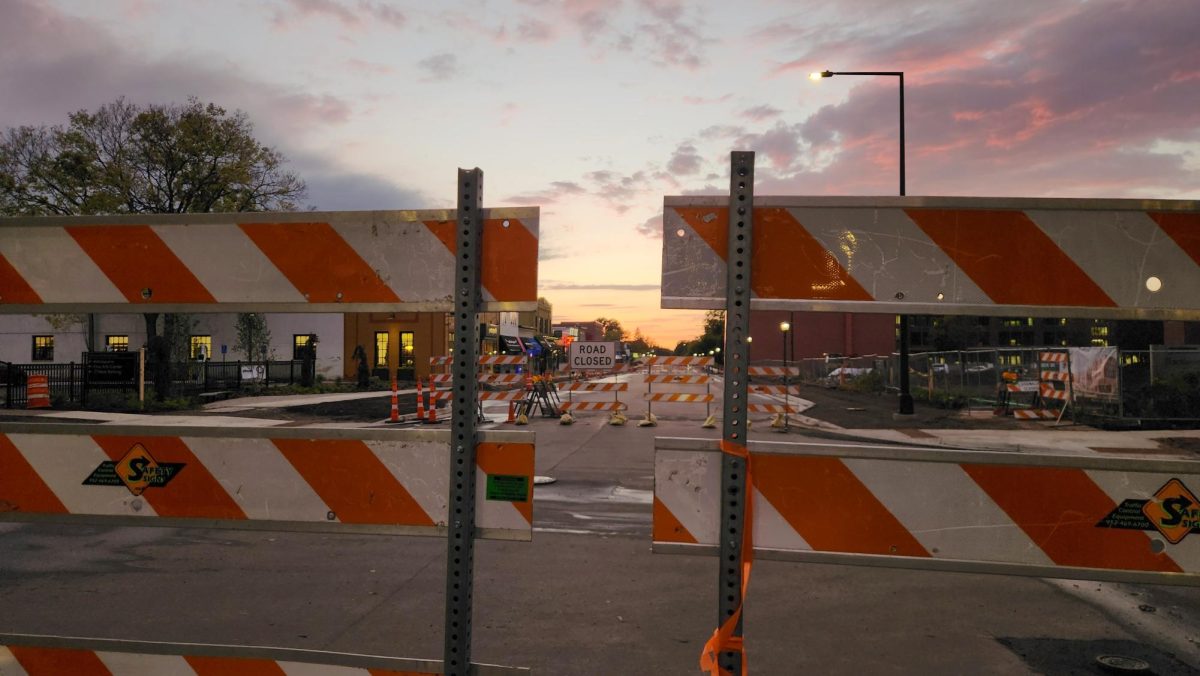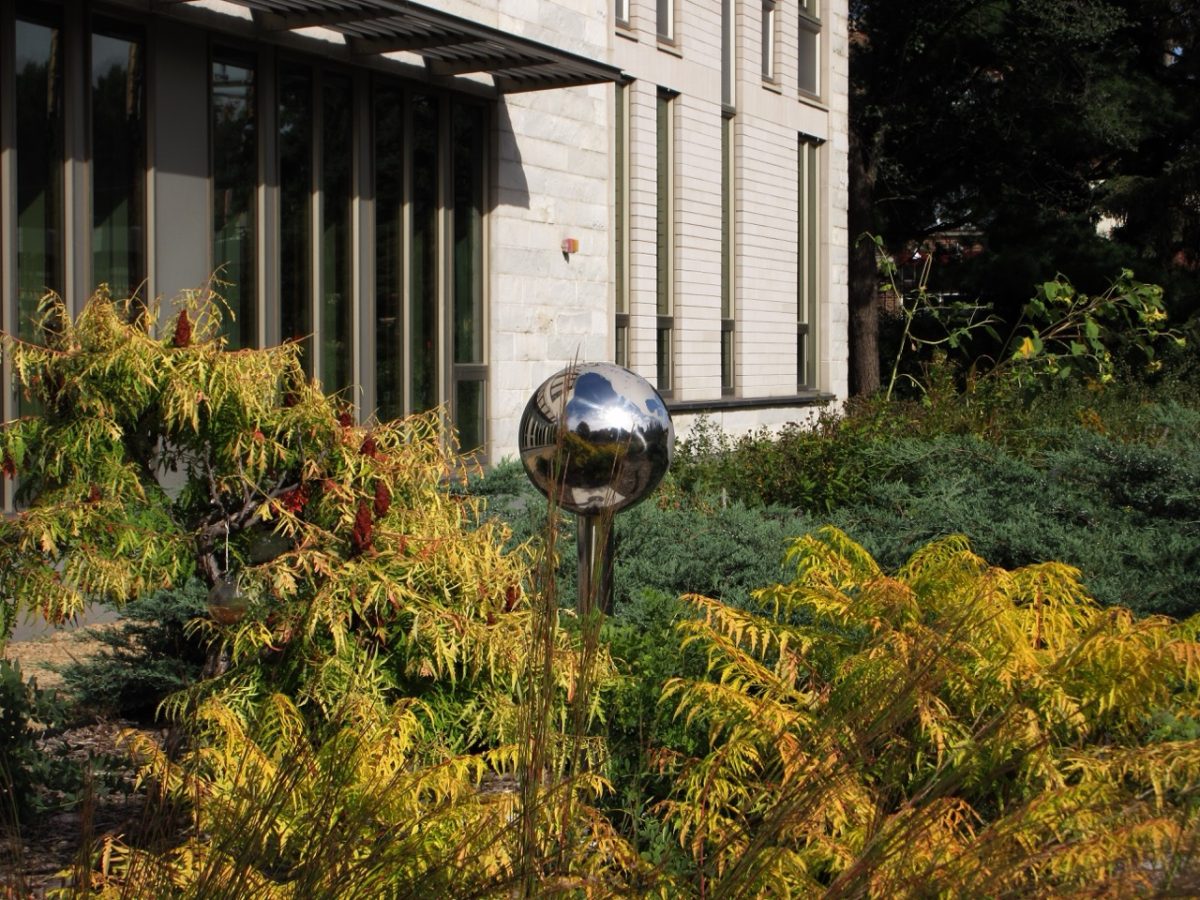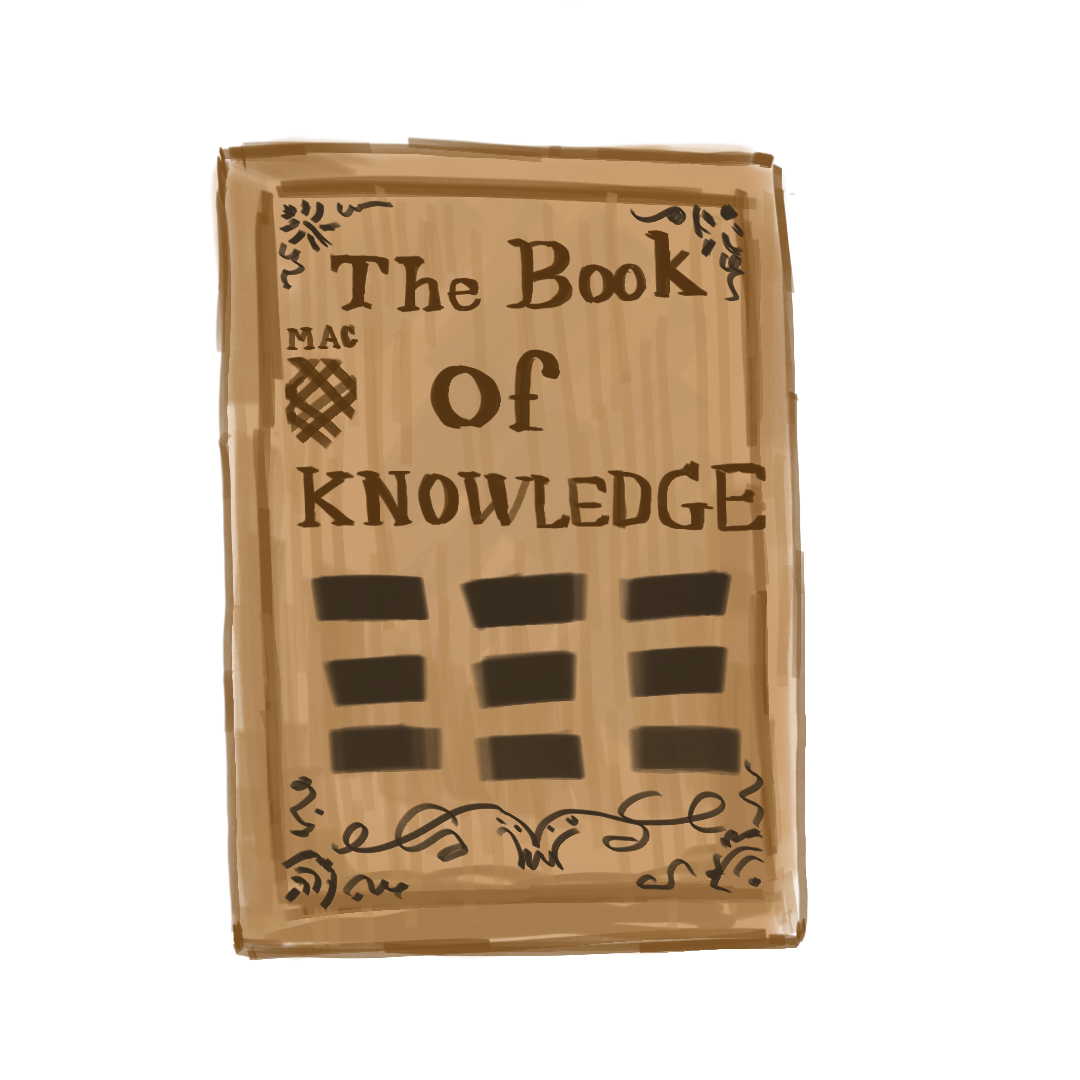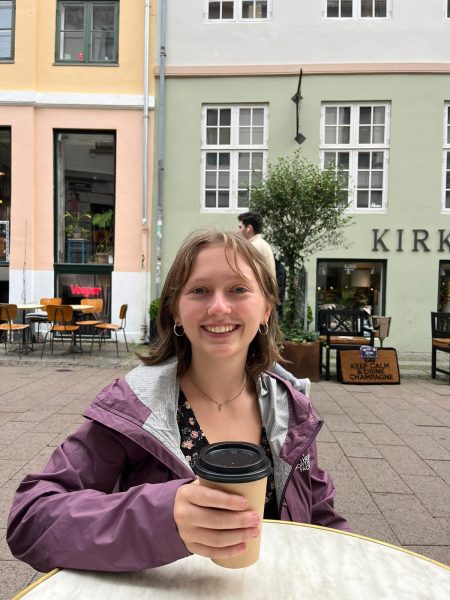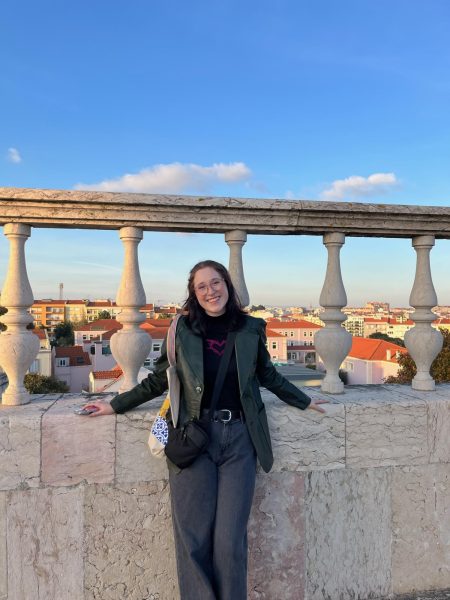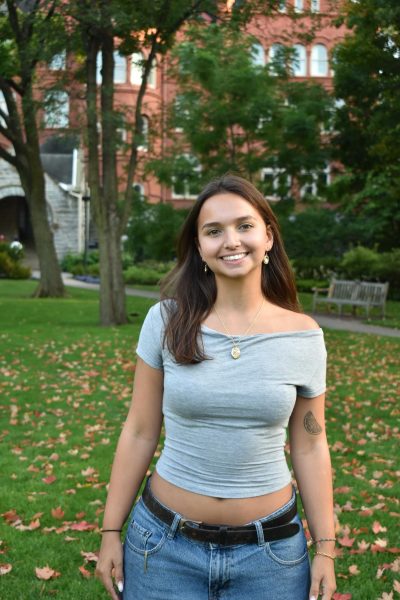A life-size cardboard cutout of Kalei Ganser ’25 adorned in the stereotypical fashion of a hula girl met guests as they entered the Law Warschaw Gallery March 26-April 2. Colorful plastic leis dangled from her outstretched arm, welcoming visitors to explore the multifaceted relationships of identity, colonization and community through a large-scale, two students’ joint capstone project.
Ganser and Leo Corral ’25 are the artists and co-curators of this exhibition, titled “Áli’e’: A Dialogue for Decolonization and Community Building.” Áli’e’ means “to see each other” in CHamoru, reflecting Ganser and Corral’s collaboration as well as the viewer’s experience.
In Ganser’s words, “Áli’e’” is “a joint exhibition with two individual installations that work in tandem with each other.” Ganser’s portion of the exhibition depicts themes of decolonization displayed on the walls of the gallery and surrounds Corral’s piece, “The Altar,” which stands in the middle, focusing on community and care.
Ganser, a museum studies major and anthropology minor, said that her portion of the project “takes an ironic look at how the history of museums has harmed Indigenous peoples in the way that they hoard and display their objects and land.”
Ganser’s concept for her capstone came to fruition when she saw an exhibit where an artist took objects from their personal life story and arranged them as a museum exhibition would.
Ganser became fascinated with how anthropology takes Indigenous items, separates them from their context and puts them on a wall. To understand this process, she embarked on a mission to undergo it with her own personal items.
“When you walk into anyone’s room, it tells the story of who they are,” Ganser said. “You have to try to combat that in a museum because there’s no context, so you don’t have the true story with all of the explanations. It’s disconnected from actual human experience, where you learn about the context through talking with people.”
Other unique items in Ganser’s displays were a vintage 1980s airline catalog, with a front cover design showcasing stereotypical, sexualized images of Indigenous women. The magazine was placed alongside other beauty products owned by Ganser, ranging from make-up products like mascara to tweezers to whitening cream, which Ganser arranged as a way to critique Western beauty standards.
“Being white is something that’s valued, especially in places like the Philippines,” Ganser said. “I have Filipino ancestry and skin bleach is something that’s valued [where] people go through medical processes to try and whiten their skin.”
In the center of the room is Corral’s creation, a museum pedestal stemming from his two disciplines in sociology and Latin American Studies. Three out of four sides of the exhibit involve an activity that honors the processes of representation and care, which allows visitors to critically engage with the work by pondering questions with no right or wrong answers like, “What has the past left for you to learn, what do we want to leave for future generations?”
“I got to curate my own life and display the whole process of curating who I am into this one piece,” Corral said. “Not just me, but all the people who have made me the person I am today.”
On one side of Corral’s altar, two clay frogs, constructed by Corral himself, sat with mouths open. Corral encouraged audiences to engage with the exhibition, writing notes in response to the prompt, “Who feeds you? Takes care of you? Nourishes you? Write them a thank-you note, appreciating their work.”
Corral then urged viewers to deliver the note to its intended recipient or to feed it to the frogs, “to be recorded as a testimony to the power of valuing care.” The participant engagement embedded in the exhibition through prompts like this one summed up the feeling that community holds power.
“Honestly, caring is valuable,” Corral said. “It’s a resource. We all rely on it. We all need it.” Inspiration for this project stemmed from Corral’s semester abroad in Ecuador, where he was introduced to collective labor practices that centered around mutual aid. Through that experience, Corral realized that caring does not have to be a burden if everyone involved truly loves it and does their part.
On the side of the altar labeled “Inheritance,” a video of an elder Corral learned from in Ecuador played on a retro television. He spoke about his work caring for his ancestral rainforest, why he cares and his hope for future generations. Drawings from children in the community in Ecuador surrounded the television, responding to the prompts: “What do you care about? How does a community show care for one another? What do you want to share with people in the US?” Most of the drawings centered around people, nature and animals.
“What are you going to do to leave something behind for future generations?” Corral said. “What do you want that to look like that isn’t monetary? It’s forcing us to think about inheritance and heritage in a different way that’s beyond the Eurocentric, capitalist kinds of thinking.”
Ganser and Corral posted QR codes along the walls of the Warschaw space as guides throughout each display. Ganser’s displays exhibited many of her own personal items “as a diasporic CHamoru and Kanaka Maoli woman,” and Corral’s drew on his family’s practice of Santería in Mexico that, “centers our agency in (re)orienting time, energy and care towards imagining and activating a world we do want to live in.”
In Ganser and Corral’s words, taken from the digital component of their exhibition, both of their installations “introduce explicit, non-Western formulations of curation, care and practice that offer an alternative system of valuation for what it means Ganser reflected on the project, saying, “I am most proud of the physical labor we’ve done, something that’s so often invisible and will be invisible after this is done.”
This physical labor is certainly reflected in the sheer size of the art installation, with many of the wall items — images, flags and quilts — belonging to a collection from both Ganser and her mother.
“It’s all art,” Ganser said. “It should all deserve the same respect, because all of them have engaged the same labor, and weaving is such a communal, intricate practice. So, creating this community within this wall was really important to me.”
For both Ganser and Corral, they hope their installation is only the catalyst for further conversations in the Macalester community and beyond.
“The incentive is that if we start to care and start valuing this process. Then hopefully that incentivizes people to start caring too, alleviating that burden so that it’s just not us having these conversations,” Corral said.

